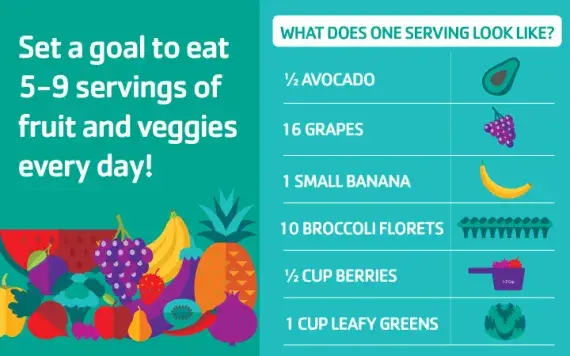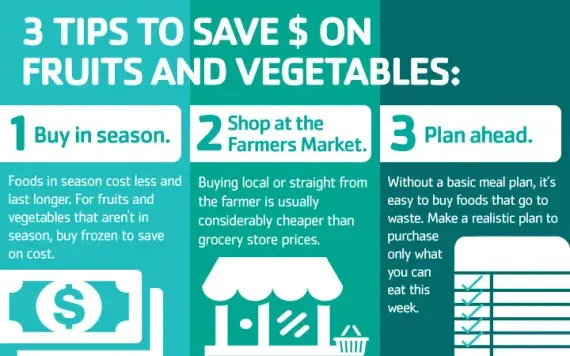It's no secret that most Americans aren't eating enough fruits and vegetables. In 2015, a study by the CDC found that only 1 out of 10 Americans meets the recommended daily allowance. At the same time, research continues to show that a diet including adequate fruits and vegetables can increase health and decrease or prevent diabetes, high blood pressure, high cholesterol, strokes, obesity and cancer.
If we know and continue to hear that eating more fruits and vegetables will improve our health, why don't we heed the advice!?
After years of working with clients to help them improve their health and meet their goals, I've found the general recommendation to "eat more fruits and vegetables" is misunderstood and confusing. Today, I want to clear up three common myths that could be blocking your way to healthier eating.
Myth 1: "Eating 5-9 servings of fruits and vegetables daily isn't realistic."
When many of us hear that we should be eating 5-9 servings of fruits and vegetables every day, we believe it’s an impossible amount. One problem is that we have lost sight of what a serving actually looks like. The truth is that 1 serving generally equals ½ cup. For example, one serving looks like a small banana, half avocado, or six baby carrots.
For most individuals, 5 servings of fruits and vegetables is an appropriate goal based on their individual calorie needs. The easiest way to measure 5 servings is to fill half your plate with fruit and/or vegetables.
Myth 2: "I can't afford to eat fruits and vegetables."
Another common misconception is that it costs too much to eat healthy. Studies have shown that produce costs only 40 cents per ½ cup, so it actually costs only $2 a day to meet the recommended 5 servings. These three simple tips can help you save money when buying fruits and vegetables: buy in season, shop at the Farmers Market, and make a meal plan.
Myth 3: "Fruits and vegetables just don't taste good."
Many people claim to dislike fruits and vegetables. They say canned fruits and vegetables are convenient but often mushy and bland; frozen vegetables are nutritionally superior, but when microwaved or steamed, are void of any flavor; and fresh produce is great, but takes too much time to prepare, and we aren't sure what to do with it. Well, let me offer four ways to make vegetables taste better: roasting, using spices and herbs, grilling, and stir frying with lean meats.
Remember, eating more fruits and vegetables won't happen by accident. Try to make small changes, and build yourself up to meeting your goal!
Establish Healthy Habits with the Y
Ready for a healthier eating approach? Get more information on YMCA memberships and health and fitness programs at your local YMCA fitness center near you. Let us partner with you to grow healthier in spirit, mind and body.



